Japanese cuisine is not only exquisite dishes, but also a whole series of traditions that are unusual for us related to table behavior. In the Land of the Rising Sun since ancient times, it is customary to use hashi, not spoons and forks, but special chopsticks. Eating with chopsticks requires some skill and experience. Therefore, you need to learn how to hold chopsticks for sushi, and then also work out at home. After that, you can safely go to a Japanese restaurant without fear of being considered ignorant among those around you.
Material Content:
Chopsticks for sushi - who invented to use for food?
In China, the first chopsticks appeared before our era and quickly became popular in Japan and other countries of East Asia. Legend has it that they were invented by a man, trying to get a hot piece of meat out of a cauldron without scalding with boiling water.
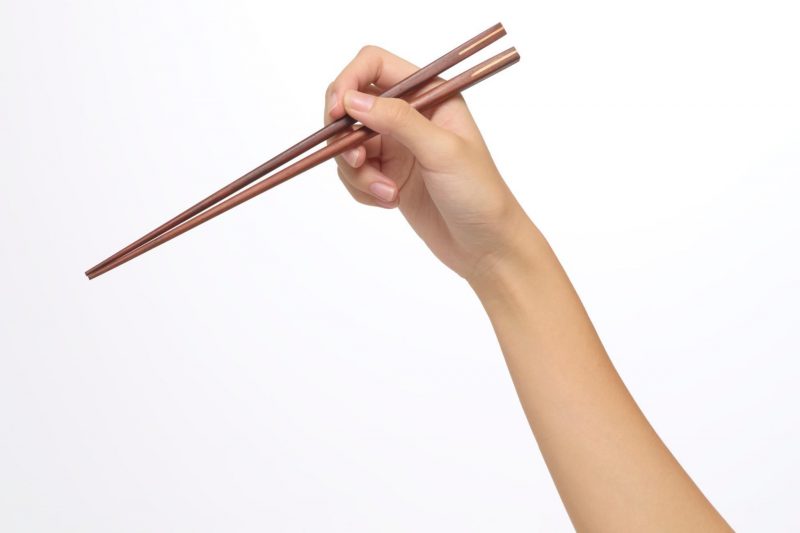
At first, these cutlery was made only from ivory, and only emperors and members of their families could use them. Ordinary people took sticks in their hands only in the 8th century AD.
Some interesting facts about Hashi
For many years, sticks were made exclusively from bamboo, while they resembled tweezers or tongs. The bamboo trunk was simply divided into two halves, which formed as unnecessary. Hashi is now made from wood, metal, porcelain and even plastic.
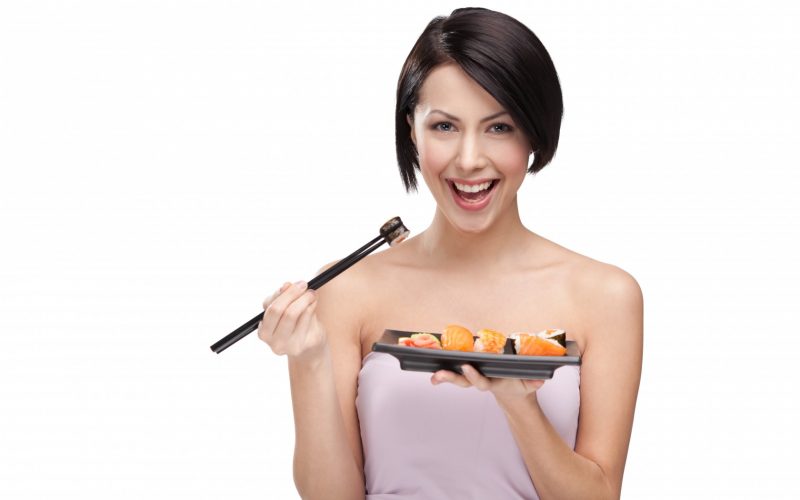
In most restaurants, it is customary to give visitors disposable appliances, although reusable ones look more presentable and elegant. They are decorated with stones, covered with patterns and different colors.
Often sticks are served to the table in special covers with a beautiful pattern or logo of the institution. Such covers have already become a collectible for many.
In Japan, children are taught to use chopsticks almost a year old. The first time a baby is given a hashi on the hundredth day after birth. Children who know how to eat with the help of such a device are often ahead in the development of their peers who do not. The fact is that when using sticks, fine motor skills develop, which directly affects mental abilities.
A variety of chopsticks for sushi

There are five main types of hashi:
- universal, made of cryptomeria, pointed at one end;
- from cedar, pointed on both sides;
- Gon Fai - used to shift food from a common plate into separate ones;
- varibashi - disposable sticks made of plastic or bamboo;
- for cooking longer than 30 cm.
Disposable sticks should ideally be connected at the ends. This means that no one has used them yet.
In addition to the main types, there are others: New Year's, gift, for the tea ceremony, for sweet dishes. For the manufacture of gift hasi, expensive types of wood are used, and they are also decorated with skillfully carved hieroglyphs and intricate patterns. Ivory sticks can be decorated with expensive stones.
How to hold sushi sticks?
At first, Chinese sticks seem very uncomfortable to use. But after several workouts, it turns out that learning to eat with their help is pretty easy.
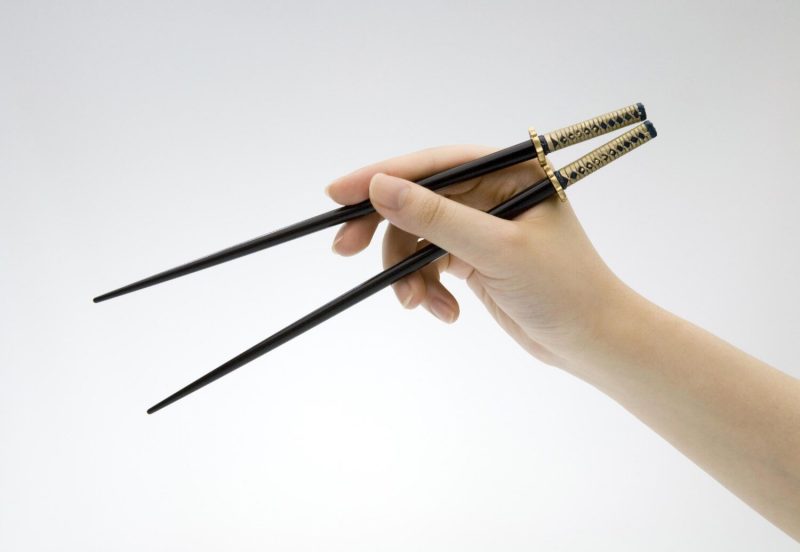
The base of the lower stick is placed in the recess between the hand and the ring finger, while pressing the thin tip with the thumb. The upper one is held approximately like a handle.
To set the tips of the sticks in motion, you need to bend or unbend the middle and index fingers. In this case, only the upper stick should move, the lower one should remain motionless. Chopsticks are easy to control if you hold them closer to the middle or bottom.
Instructions on how to learn for beginners
One of the main conditions is lightness, smoothness and freedom of hand movements. The brushes should never be clamped.

Detailed instructions:
- Bend a little and connect the ring finger of the right hand with the little finger.
- Take the first hashi and lay it between the thumb and forefinger on the ring finger. The point of contact with the fingers should be 1/3 of the upper side.
- Take the second stick as you hold the pen while writing. Correctly located sticks should be in contact only with the lower tips, while the upper ones should be separated from each other at a distance of 1.5 cm.
Knowing how to learn how to hold sushi sticks, you can begin training. To do this, you can try to take small objects with chopsticks - peas, corn, matches. If there are no problems with this, then with large pieces of food everything will be even easier.
For beginners, it is best to eat with wooden chopsticks - food is not so often slipped out of them, as is the case when using hashi made of plastic or ivory.
How to eat sushi and rolls?
By tradition, sushi and rolls always use a warm towel for hands and face. The sauce is served in special bowls that are held in your left hand for convenience. Sushi or rolls are carefully taken with chopsticks and dipped into the sauce with a rib. In this case, you can not completely dip the piece. Portion pieces can not be bitten: they can only be sent to the mouth in its entirety or divided using chopsticks into parts and only then eat.
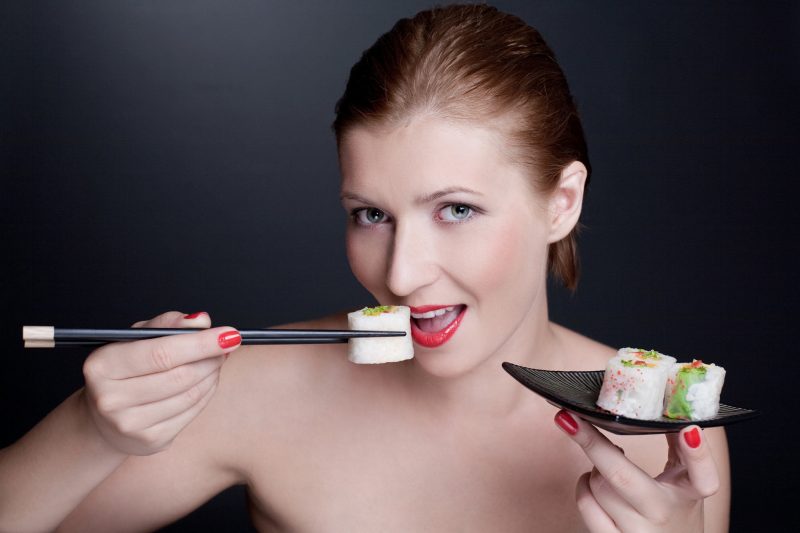
During the meal, men can eat not only with chopsticks, but also with their hands. This permission does not apply to women - they can use only Hashi.
Several Hashi Etiquette Rules
The food culture of the Japanese and Chinese is very different from the European.
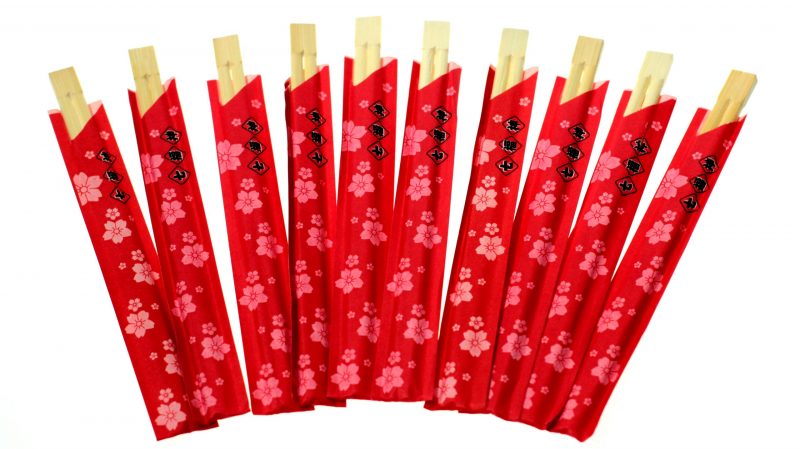
Therefore, you need to take note of these rules:
- It is forbidden to stick pieces of food on sticks or pierce a dish with them. Hashi is stuck in rice only at the funeral.
- Do not draw with sticks on a plate or table.
- A sign of bad taste is also considered licking sticks and winding noodles on them.
- After the meal, do not put sticks across the dish. They can be placed on a stand, on a table, or on the edge of a plate.
- If a person wants to ask for supplements, he needs to put a hashi on the table.
Also, do not use sticks as a pointer and pinch them in a fist.
This cutlery is unusual for us, but it helps to fully enjoy the taste of Japanese and Chinese dishes and to touch the culture of these peoples.












